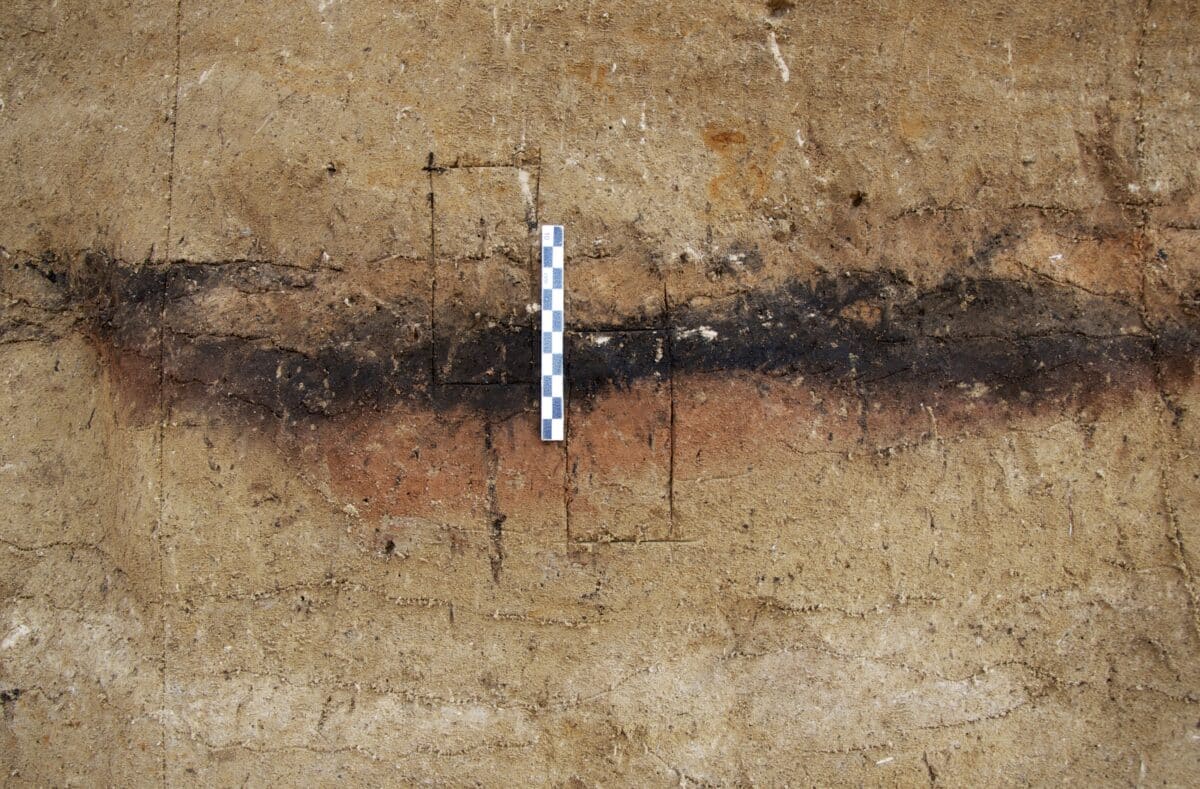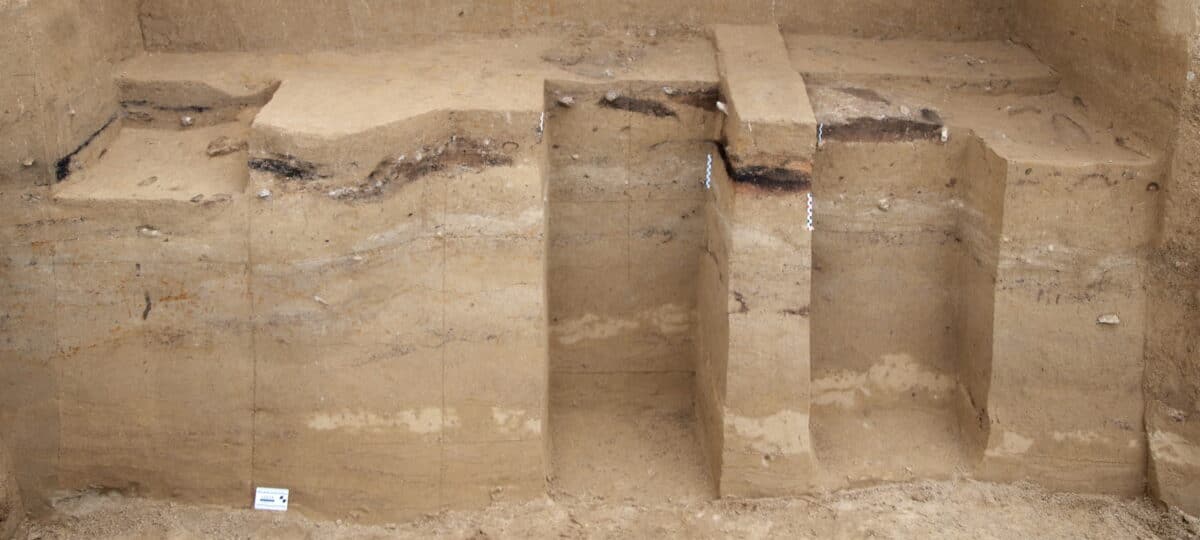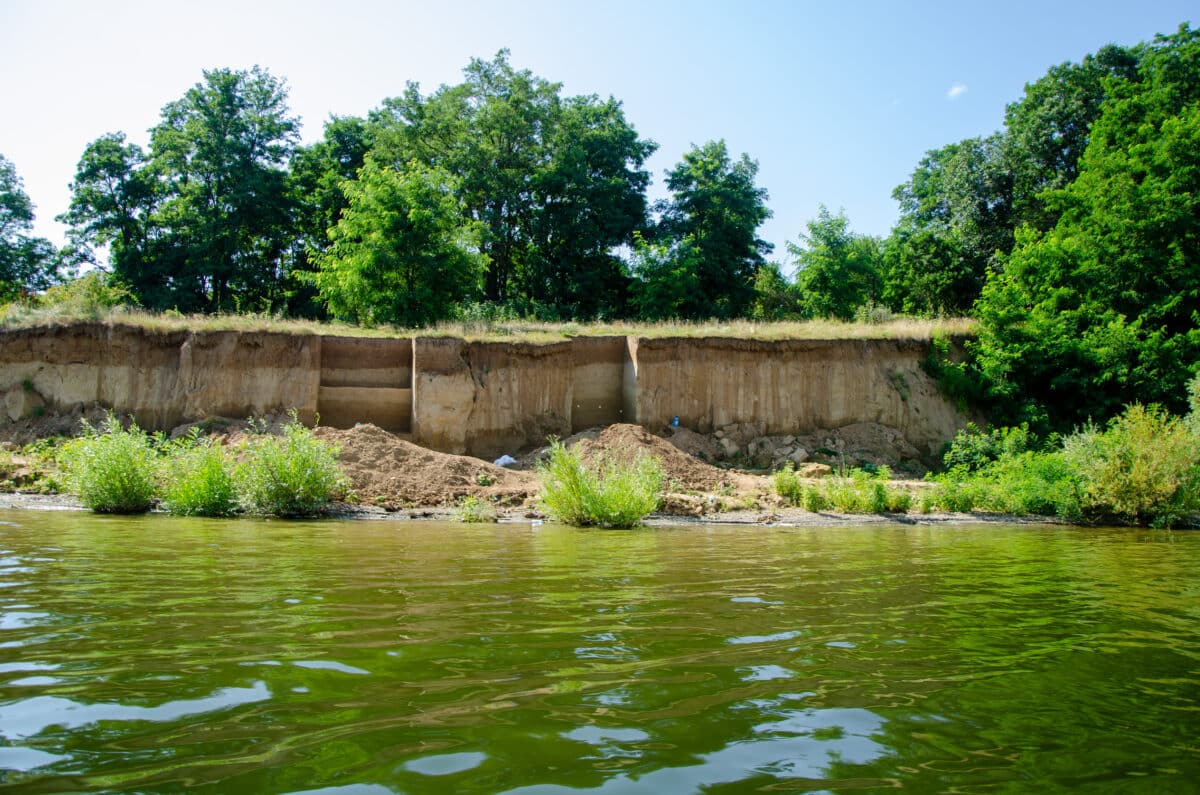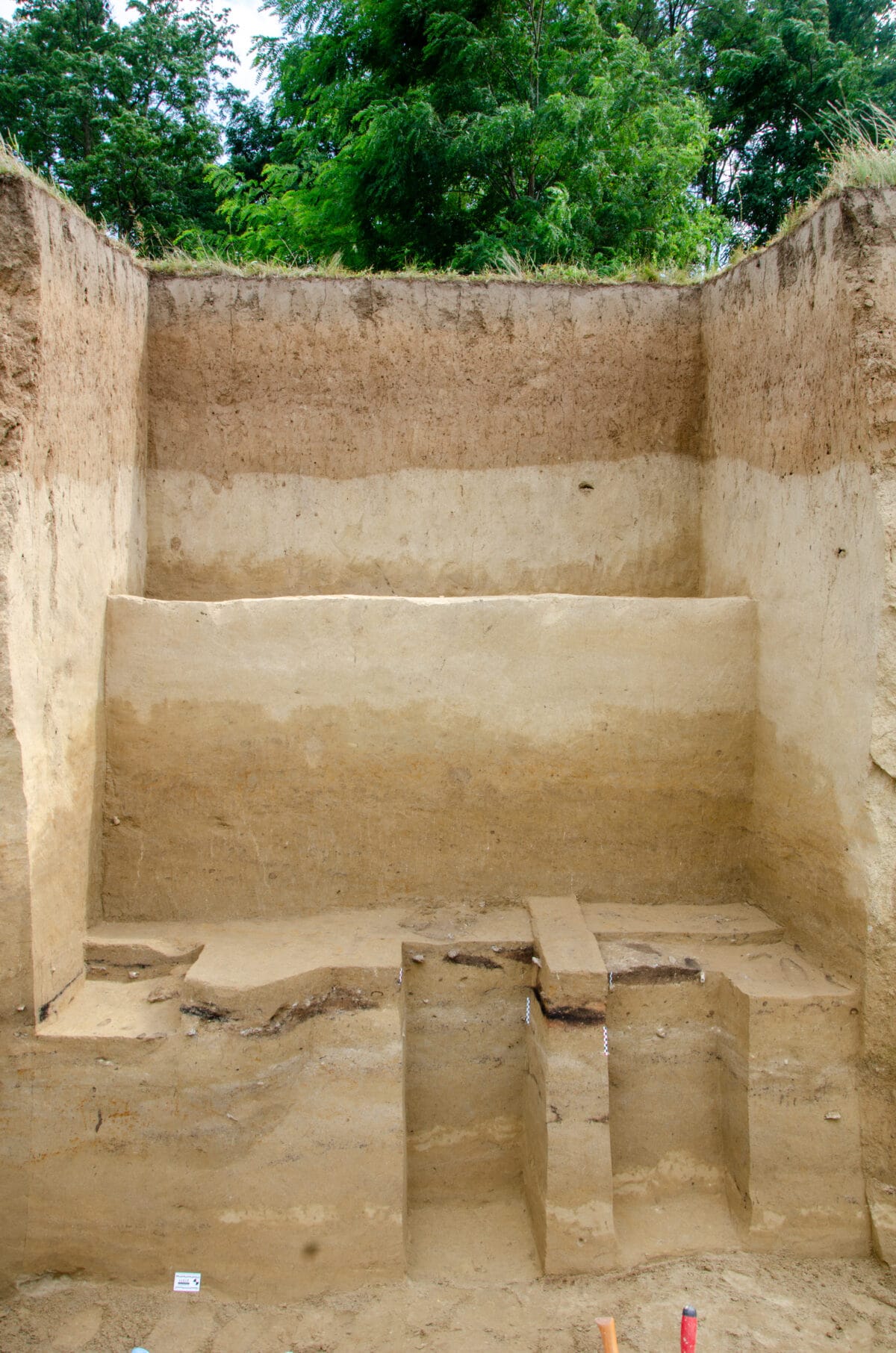
Section through the large fireplace 1. (Credit: Philip R. Nigst)
In a nutshell
- Stone Age humans mastered fire technology during Earth’s harshest climate period 23,000 years ago, creating hearths that reached temperatures of 600°C—comparable to modern campfires.
- Despite theories suggesting otherwise, these Ice Age people primarily used wood (specifically spruce) as fuel rather than bone, showing sophisticated environmental knowledge.
- The discovery challenges previous assumptions that humans retreated to southern refuges during extreme cold periods, proving our ancestors successfully adapted to even the most extreme environments.
VIENNA — Fire transformed early humans from vulnerable prey into Earth’s dominant species. A fascinating new study reveals our ancestors didn’t just control fire during the planet’s most brutal ice age—they mastered it.
These fire features show that humans successfully occupied what we thought were uninhabitable landscapes during the most extreme recent climate crisis in human history.
Research from Ukraine’s Korman’ 9 archaeological site shows that roughly 23,000 years ago, when continental ice sheets were at their thickest and resources most scarce, some societies maintained sophisticated hearths reaching temperatures comparable to modern campfires.
This discovery challenges previous assumptions about human capabilities during extreme climate crises. Study authors paint a picture of hunter-gatherers who thrived by selecting specific wood types and maintaining fires hot enough to cook food, provide warmth, and support community activities.

Ancient Hearths Tell a Survival Story
The team examined three ancient hearths dating to the Last Glacial Maximum (LGM)—the period between 26,500 and 19,000 years ago when ice sheets covered vast portions of North America and northern Europe, and temperatures plunged worldwide. Using microscopic soil analysis and innovative color measurement techniques, they reconstructed how Stone Age people built and maintained fires when wood was scarce and survival hung in the balance.
“We know that fire was widespread before and after this period, but there is little evidence from the height of the Ice Age,” says William Murphree, lead author of the study and geoarchaeologist at the University of Algarve, in a statement.
The hearths themselves were surprisingly elaborate. Each showed distinct layers: a reddened base where heat altered the soil underneath, a black middle layer rich with charcoal and burned materials, and in some cases, a brownish upper layer formed after abandonment. Testing revealed these fires reached temperatures up to 600°C—hot enough for cooking, tool production, and keeping warm in subzero temperatures.

Resource Management in an Ice Age
What’s particularly interesting is what the fires were burning. Analysis showed wood—specifically spruce—was the primary fuel source, not animal bones as some theories had suggested might be necessary during periods when trees were scarce. This indicates these hunter-gatherers had detailed knowledge of their environment and could find and harvest woody materials even in the steppe landscape of Ice Age Ukraine.
Two of the hearths showed intriguing differences. One appeared larger with thicker deposits, suggesting more intensive or longer-term use, while the other contained less organic material. This could mean either separate occupations at different times or distinct purposes within the same settlement—perhaps one for extended cooking and another for brief warmth or light.
“People perfectly controlled the fire and knew how to use it in different ways, depending on the purpose of the fire. But our results also show that these hunter-gatherers used the same place at different times of the year during their annual migrations,” says Philip R. Nigst, one of the lead authors and an archaeologist at the University of Vienna.
The study also revealed how these ancient features changed over millennia. Natural processes like soil movement from freezing-thawing cycles and disturbance by plant roots and animal burrowing altered the hearths, yet they remained identifiable to today’s researchers.

The Missing Hearths Mystery
These findings connect to similar discoveries at other Ukrainian sites like Barmaky, suggesting a regional pattern of fire technology adaptation. This contradicts older archaeological narratives that claimed human populations mostly retreated to southern refuges during the LGM.
Despite these exciting findings, the researchers point out a puzzling contradiction: if fire was so crucial for survival during the harshest cold period, why have archaeologists found so few well-preserved hearths from this time?
“Was most of the evidence destroyed by the ice-age-typical, alternating freezing and thawing of the soil?” asks Murphree.
“Or did people not find enough fuel during the Last Glacial Maximum? Did they not use fire, but instead relied on other technological solutions?” adds Nigst.
The authors suggest this scarcity might stem from poor preservation in periglacial conditions, where simple hearths receive less attention than more complex structures, or perhaps a genuine reduction in widespread fire use during this period. The Korman’ 9 findings demonstrate that at least some human groups maintained sophisticated fire practices, but the overall pattern remains enigmatic.
What is clear though is that the mastery of fire during Earth’s most severe recent climate episode wasn’t just about survival—it demonstrated human adaptability under extreme resource scarcity and environmental stress. Understanding these ancient fire practices offers a window into our species’ extraordinary capacity for innovation when facing existential challenges.
Paper Summary
Methodology
The research team used multiple approaches to analyze three ancient hearths at the Korman’ 9 site in Ukraine’s Middle Dniester Valley. They combined field observations with micromorphological analysis of six thin-section soil samples taken from two hearths. These samples were examined under microscopes at various magnifications to identify components like charcoal, ash, and burned bone fragments. The researchers created detailed 3D models of the hearths using photogrammetry and developed a new colorimetric analysis method that used digital photography to estimate ancient fire temperatures by analyzing color changes in the soil beneath the hearths.
Results
All three hearths were simple, unlined flat structures dating to approximately 23,000-21,000 years ago during the Last Glacial Maximum. Each hearth showed three distinct layers: a red bottom layer where heat altered the soil (reaching temperatures up to 600°C), a black middle layer containing charcoal and other burned materials, and often a brownish upper layer formed after abandonment. Spruce wood was identified as the main fuel rather than bone. The hearths showed different usage patterns—one appeared more intensively used than the other—suggesting either different functions or separate occupation periods. The hearths showed no evidence of reuse, indicating they were abandoned after initial use. Natural processes like soil movement from freezing/thawing and disturbance by plants and animals affected how the hearths were preserved.
Limitations
The third hearth remained unexcavated, limiting complete analysis to only two features. The researchers note a general lack of comparable data from this time period across Europe, making broader interpretation difficult. Extensive disturbance from natural processes complicated the analysis. The ash component was poorly preserved, with only small fragments identified. For one hearth, the mixing of layers made temperature estimation impossible using their new method.
Funding/Disclosures
The research received support from multiple organizations including the Fundação para a Ciência e a Tecnologia, the European Research Council MATRIX Project, EC FP7 Marie Curie Career Integration Grant, Leakey Foundation, Isaac Newton Trust, British Academy/Leverhulme Trust, Max-Planck-Society, and several others. The authors declared no conflicts of interest.
Publication Information
“Fire Use During the Last Glacial Maximum: Evidence From the Epigravettian at Korman’ 9, Middle Dniester Valley, Ukraine” was published in Geoarchaeology (Volume 40, Issue 2, 2025). The international research team included scientists from Portugal, Spain, Ukraine, Czech Republic, Austria, Belgium, and other European institutions.







